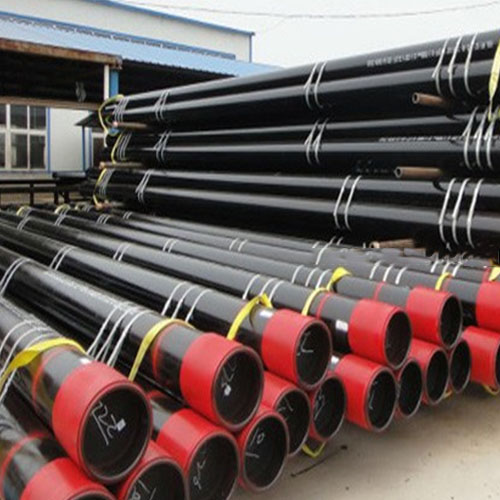Benefits of Using casing Hangers in Oil and gas Wells
Casing hangers play a crucial role in the construction and integrity of oil and gas wells. these devices are used to support and hang the casing strings in the wellbore, providing stability and ensuring proper wellbore isolation. Casing hangers are essential components in the drilling and completion process, as they help to maintain well integrity and prevent any potential leaks or failures.
One of the key benefits of using casing hangers in oil and gas wells is their ability to provide a secure and reliable connection between the casing and the wellhead. This connection is critical for maintaining well integrity and preventing any leaks or failures that could result in costly downtime and environmental damage. Casing hangers are designed to withstand high pressures and temperatures, ensuring that they can effectively support the weight of the casing string and maintain a tight seal between the casing and the wellhead.
In addition to providing a secure connection, casing hangers also help to prevent any movement or shifting of the casing string during drilling and completion operations. This is important for maintaining wellbore stability and ensuring that the casing remains in the proper position throughout the life of the well. By using casing hangers, operators can minimize the risk of casing failure and ensure that the wellbore is properly isolated from any surrounding formations.
Another benefit of using casing hangers in oil and gas wells is their versatility and adaptability to different wellbore conditions. Casing hangers come in a variety of sizes and configurations to accommodate different casing sizes and wellbore designs. This flexibility allows operators to customize their casing hanger systems to meet the specific requirements of each well, ensuring optimal performance and reliability.
vandalized oil Pipe
Furthermore, casing hangers are designed to be easy to install and maintain, reducing the time and cost associated with well construction and maintenance. Casing hangers can be quickly and easily installed using standard wellhead equipment, minimizing downtime and ensuring that the well can be brought into production as quickly as possible. Additionally, casing hangers are designed to withstand the harsh conditions of the oil and gas industry, requiring minimal maintenance and providing long-lasting performance.
Overall, the use of casing hangers in oil and gas wells offers a wide range of benefits, including improved well integrity, enhanced wellbore stability, and reduced downtime and maintenance costs. By investing in high-quality casing hangers and incorporating them into well construction and completion processes, operators can ensure the long-term success and productivity of their wells. Casing hangers are an essential component of any well construction project, providing the support and stability needed to ensure safe and efficient operations in the oil and gas industry.
How to Properly Install and Maintain Casing Hangers in Wellbore Operations
Casing hangers are a critical component in wellbore operations, providing support and sealing for the casing strings that are run into the well. Proper installation and maintenance of casing hangers are essential to ensure the integrity and efficiency of the well. In this article, we will discuss the importance of casing hangers, the steps involved in their installation, and best practices for their maintenance.
Casing hangers serve several important functions in a wellbore. They support the weight of the casing string, preventing it from collapsing under the pressure of the surrounding formation. They also provide a seal between the casing and the wellhead, preventing fluid from leaking out of the well. Additionally, casing hangers help to centralize the casing string within the wellbore, ensuring that it is properly aligned and supported.
The installation of casing hangers is a critical step in the construction of a well. The process begins with the preparation of the wellhead, which involves cleaning and inspecting the wellhead components to ensure they are in good condition. The casing hanger is then installed into the wellhead, typically using a running tool that is lowered into the well on a drill string. The casing hanger is landed in the wellhead and secured in place using locking mechanisms or slips.
Mobile Phone CaseOnce the casing hanger is installed, the casing string is run into the well and landed on the hanger. The casing hanger provides support for the weight of the casing string and helps to ensure that it is properly aligned within the wellbore. Once the casing string is in place, the casing hanger is tested to ensure that it is holding the weight of the casing and providing a proper seal.
Proper maintenance of casing hangers is essential to ensure their continued performance and reliability. Regular inspections should be conducted to check for signs of wear or damage, such as corrosion or erosion. Any issues should be addressed promptly to prevent further damage to the casing hanger or the wellhead.

In addition to regular inspections, casing hangers should be lubricated periodically to ensure smooth operation and prevent corrosion. Lubricants should be applied to the moving parts of the casing hanger, such as the locking mechanisms or slips, to reduce friction and wear. It is important to use the correct type of lubricant for the specific components of the casing hanger to prevent damage or malfunction.
fiberglass casing oil wellIn conclusion, casing hangers play a crucial role in wellbore operations, providing support and sealing for the casing strings that are run into the well. Proper installation and maintenance of casing hangers are essential to ensure the integrity and efficiency of the well. By following best practices for installation and maintenance, operators can ensure that their casing hangers perform effectively and reliably throughout the life of the well.
